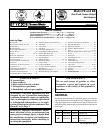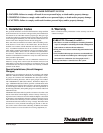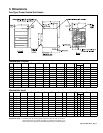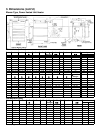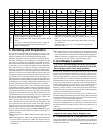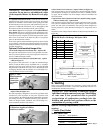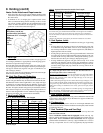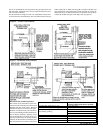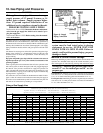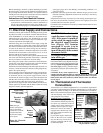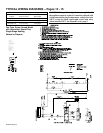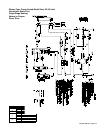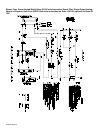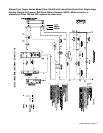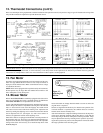
Form 436, Page 2
1. Installation Codes
The gas-fired unit heaters covered in this manual are design-certified
by the American Gas Association and approved by the Canadian Gas
Association for use with either natural or propane gas. The type of gas
for which your heater is equipped and the correct firing rate are shown
on the rating plate attached to your unit. Electrical characteristics are
shown on the motor nameplate and on the unit rating plate.
These units must be installed in accordance with local building codes.
In the absence of local codes, in the United States, the unit must be
installed in accordance with the National Fuel Gas Code (latest edi-
tion). A Canadian installation must be in accordance with the CAN/
CGA B149.1 and B149.2 Installation Code for Gas Burning Appli-
ances and Equipment. These codes are available from CSA Informa-
tion Services, 1-800-463-6727. Local authorities having jurisdiction
should be consulted before installation to verify local codes and instal-
lation procedure requirements.
Clearances from the heater and vent to combustible construction or
material in storage must conform with the National Fuel Gas Code
ANSI Z223.1a (latest edition) pertaining to gas-burning devices, and
such material must not attain a temperature over 160
o
F by continued
operation of the heater.
Special Installations (Aircraft Hangars/
Garages)
Installations in aircraft hangars should be in accordance with ANSI/
NFPA No. 409 (latest edition), Standard for Aircraft Hangars; in pub-
lic garages in accordance with ANSI/NFPA No. 88A (latest edition),
Standard for Parking Structures; and for repair garages in accordance
with ANSI/NFPA No. 88B (latest edition), Standard for Repair Ga-
rages. ANSI/NFPA-88 (latest edition) specifies overhead heaters must
be installed at least eight feet above the floor. In Canada, installations
in aircraft hangars should be in accordance with the requirements of
the enforcing authorities, and in public garages in accordance with CAN/
CGA B149 codes.
ANSI/NFPA 409 (latest edition) specifies a clearance of ten feet to the
bottom of the heater from the highest surface of the top of the wing or
engine enclosure of whatever aircraft would be the highest to be housed
in the hangar, and a minimum clearance of eight feet from the floor in
other sections of aircraft hangars, such as the offices, and shops which
communicate with areas used for servicing or storage. The heaters must
be located so as to be protected from damage by aircraft or other ob-
jects such as cranes and movable scaffolding. In addition, the heaters
must be located so as to be accessible for servicing, adjustment, etc.
WARRANTY: Warranty is void if......
a. Unit Heaters are used in atmospheres containing flammable
vapors or atmospheres containing chlorinated or halogenated
hydrocarbons or airborne silicone substances.
b. Wiring is not in accordance with the diagram furnished with
the heater.
c. Unit is installed without proper clearances to combustible ma-
terials or located in a confined space without proper ventila-
tion and air for combustion. (See Paragraphs 6 and 7.)
d. Fan-type unit heater is connected to a duct system.
HAZARD INTENSITY LEVELS
1. DANGER: Failure to comply will result in severe personal injury or death and/or property damage.
2. WARNING: Failure to comply could result in severe personal injury or death and/or property damage.
3. CAUTION: Failure to comply could result in minor personal injury and/or property damage.
2. Warranty
Refer to limited warranty information on the warranty card in the
"Owner's Envelope".



